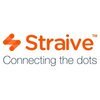Data Science Consultant
10+ Data Science Consultant Interview Questions and Answers

Asked in Deloitte

Q. Why did you choose those specific technologies/algorithms?
I chose those specific technologies/algorithms based on their suitability for the problem at hand and my experience with them.
Considered problem requirements and constraints
Evaluated strengths and weaknesses of available options
Leveraged prior experience and knowledge
Prioritized ease of implementation and maintainability
Examples: Used Random Forest for classification due to its ability to handle large datasets and high dimensionality. Used K-Means for clustering due to its si...read more

Asked in Accenture

Q. Estimate the number of sofas sold in a day in your city.
It is difficult to estimate the exact number of sofas sold in a day in a city without specific data.
The number of sofas sold in a day can vary greatly depending on factors such as population size, economic conditions, and consumer preferences.
One way to estimate could be to look at the number of furniture stores in the city and their average daily sales.
Another approach could be to conduct a survey of a sample of furniture stores to get an idea of their daily sofa sales.
Onlin...read more

Asked in Accenture

Q. How do you approach an end-to-end ML problem?
I approach an end to end ML problem by understanding the problem, collecting data, preprocessing data, selecting a model, training the model, evaluating the model, and deploying the model.
Understand the problem and define the objective
Collect and preprocess data
Select a suitable machine learning model
Train the model using the data
Evaluate the model's performance
Deploy the model for production use

Asked in EXL Service

Q. What is the difference between bagging and boosting?
Bagging reduces variance by averaging predictions, while boosting reduces bias by sequentially improving weak learners.
Bagging (Bootstrap Aggregating) involves training multiple models independently and averaging their predictions.
Boosting combines weak learners sequentially, where each new model focuses on the errors of the previous ones.
Example of Bagging: Random Forest, which builds multiple decision trees and averages their outputs.
Example of Boosting: AdaBoost, which adj...read more

Asked in Accenture

Q. What are the key differences between boosting and bagging techniques?
Boosting and bagging are ensemble learning techniques used to improve the performance of machine learning models.
Boosting focuses on improving the performance of a single model by training multiple models sequentially, where each subsequent model corrects the errors of its predecessor.
Bagging, on the other hand, involves training multiple models independently and then combining their predictions through averaging or voting.
Boosting typically results in lower bias and higher v...read more

Asked in Deloitte

Q. Explain KDD and each step in detail.
KDD is a process of discovering useful knowledge from data.
KDD stands for Knowledge Discovery in Databases.
It involves several steps such as data cleaning, data integration, data selection, data transformation, data mining, pattern evaluation, and knowledge representation.
The ultimate goal of KDD is to extract useful knowledge from data and use it for decision-making.
For example, KDD can be used in healthcare to analyze patient data and identify patterns that can help in dise...read more
Data Science Consultant Jobs




Asked in Deloitte

Q. When should bagging versus boosting techniques be used?
Bagging reduces variance; boosting reduces bias. Use bagging for unstable models, boosting for improving weak learners.
Bagging is effective for high-variance models like decision trees (e.g., Random Forest).
Boosting is useful for improving weak learners (e.g., AdaBoost, Gradient Boosting).
Use bagging when you want to parallelize training; boosting is sequential and can be slower.
Bagging helps in reducing overfitting, while boosting can lead to overfitting if not tuned properl...read more

Asked in Blue Yonder

Q. Explain one ML model to a non-technical stakeholder.
Random Forest is a machine learning model that uses multiple decision trees to make predictions.
Random Forest is an ensemble learning method that combines multiple decision trees to improve accuracy and reduce overfitting.
Each decision tree in the Random Forest is trained on a random subset of the data and features.
The final prediction is made by averaging the predictions of all the individual trees in the forest.
Random Forest is commonly used for classification and regressio...read more
Share interview questions and help millions of jobseekers 🌟


Asked in Anblicks

Q. What is the bias-variance tradeoff?
Bias-variance tradeoff is the balance between model complexity and error, affecting prediction accuracy.
Bias refers to error due to overly simplistic assumptions in the learning algorithm.
Variance refers to error due to excessive complexity in the model, leading to overfitting.
High bias can lead to underfitting, where the model fails to capture the underlying trend (e.g., linear regression on non-linear data).
High variance can lead to overfitting, where the model captures noi...read more

Asked in Straive

Q. How do you handle model overfitting?
Overfitting occurs when a model learns noise instead of the signal; various techniques can mitigate this issue.
Use cross-validation to ensure the model generalizes well to unseen data.
Implement regularization techniques like L1 (Lasso) or L2 (Ridge) to penalize complex models.
Prune decision trees to remove branches that have little importance.
Reduce the number of features through techniques like PCA (Principal Component Analysis).
Increase the training dataset size to provide ...read more

Asked in TCS

Q. What is normalization?
Normalization is the process of scaling and standardizing data to a common range.
Normalization helps in comparing different features on the same scale.
Common techniques include Min-Max scaling and Z-score normalization.
Example: Scaling age and income variables to a range of 0 to 1.

Asked in KPMG Global Services

Q. What is standardization?
Standardization is the process of rescaling the features so that they have the properties of a standard normal distribution with a mean of 0 and a standard deviation of 1.
Standardization helps in comparing different features on a common scale.
It is useful when the features have different units or scales.
Commonly used in machine learning algorithms like support vector machines and k-nearest neighbors.
Example: If one feature is in meters and another is in kilograms, standardiza...read more

Asked in Tata Motors

Q. What is a transformer?
Transformer is a type of deep learning model architecture used for various natural language processing tasks.
Transformer models use self-attention mechanism to weigh the importance of different words in a sentence.
They consist of encoder and decoder layers to process input and generate output.
Examples of transformer models include BERT, GPT, and T5.

Asked in Accenture

Q. What are the evaluation techniques for machine learning algorithms?
Evaluation techniques for machine learning algorithms include cross-validation, confusion matrix, ROC curve, and precision-recall curve.
Cross-validation: Splitting the data into multiple subsets for training and testing to assess model performance.
Confusion matrix: A table showing the true positive, true negative, false positive, and false negative predictions of a model.
ROC curve: Receiver Operating Characteristic curve plots the true positive rate against the false positive...read more
Asked in Parabole

Q. What is the F1 score?
The F1 score is a measure of a model's accuracy that considers both the precision and recall of the model.
F1 score is the harmonic mean of precision and recall.
It ranges from 0 to 1, where 1 is the best possible F1 score.
F1 score is useful when you have uneven class distribution or when false positives and false negatives have different costs.
Formula: F1 = 2 * (precision * recall) / (precision + recall)

Asked in Deloitte

Q. why Deloitte and why tax?
Deloitte offers a strong reputation, diverse client base, and opportunities for growth. Tax consulting allows me to apply data science to complex financial regulations.
Deloitte is a reputable company known for its diverse client base and opportunities for career advancement
Tax consulting offers the chance to work with complex financial regulations and apply data science techniques
Combining Deloitte's reputation with the challenges of tax consulting aligns with my career goals

Asked in Accenture

Q. Design a dwmand planning system
Design a demand planning system for efficient forecasting and inventory management.
Utilize historical sales data to identify trends and seasonality
Incorporate external factors like market trends, promotions, and competitor activities
Implement machine learning algorithms for accurate demand forecasting
Integrate with inventory management systems for optimized stock levels
Regularly review and adjust the system based on performance metrics

Asked in KPMG India

Q. Explain a Machine Learning algorithm.
ML algorithm is a set of rules and statistical models that enable machines to learn from data and make predictions or decisions.
ML algorithm uses statistical techniques to identify patterns in data and make predictions or decisions.
It involves training a model on a dataset and then using that model to make predictions on new data.
There are various types of ML algorithms such as supervised learning, unsupervised learning, and reinforcement learning.
Examples of ML algorithms in...read more

Asked in Accenture

Q. Ml algorithm’s terminology
ML algorithm's terminology refers to the specific vocabulary used to describe concepts, processes, and components in machine learning models.
Supervised learning: algorithms learn from labeled training data, e.g. linear regression, support vector machines
Unsupervised learning: algorithms find patterns in unlabeled data, e.g. clustering, dimensionality reduction
Feature engineering: process of selecting, transforming, and creating features for input data
Overfitting: model perfor...read more
Interview Questions of Similar Designations
Interview Experiences of Popular Companies








Reviews
Interviews
Salaries
Users

















